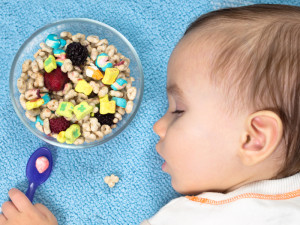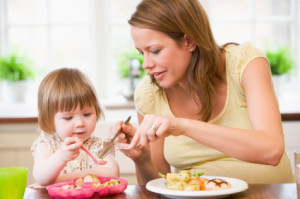How to Stop Kids Begging for Food While You’re Cooking
/ Kids begging for food while you're cooking. Do you experience this common situation? You rush home from work and daycare pick-up, drop your bag and coat, and immediately get to work in the kitchen making dinner (or should I say figuring out what’s for dinner and then making it?). As you’re cooking, your little one suddenly is famished. They’re underfoot, claiming that they’re “staaaarrrvvving” and begging you for something to eat. Saying that they couldn’t possibly wait the 10 minutes until dinner is ready.
Kids begging for food while you're cooking. Do you experience this common situation? You rush home from work and daycare pick-up, drop your bag and coat, and immediately get to work in the kitchen making dinner (or should I say figuring out what’s for dinner and then making it?). As you’re cooking, your little one suddenly is famished. They’re underfoot, claiming that they’re “staaaarrrvvving” and begging you for something to eat. Saying that they couldn’t possibly wait the 10 minutes until dinner is ready.
What do you do? Do you reach into the fridge or cupboard for a stop-gap snack? Hand them pieces of food from the cutting board? Shoo them away (again and again), telling them that dinner will be ready in 10 minutes?
If you’re like many of the parents who ask me how to handle this situation, then you likely give them a stop-gap snack or pieces of food from the cutting board because it feels awful to tell a hungry child “no”. The thanks that you get? When it’s time to sit down for dinner, your child tells you that they aren’t hungry and they misbehave to get out of having to continue sitting at the table.
Having kids underfoot while you’re cooking isn’t a good idea for several reasons:
- Safety. It’s not safe to have little ones underfoot when you’ve got sharp knives, hot pans, and scalding water. The kitchen should be a ‘no go zone’ for kids when adults are cooking. That is unless you’re cooking together.
- Speed. Stopping to give handouts slows you down and interrupts your thoughts about dinner. So it actually makes it take longer to get dinner on the table.
- Encouraging not eating dinner. Little kids find sitting still a challenge – including sitting still to eat meals. By feeding them a stop-gap snack or food off the cutting board, you’re taking away one of the most powerful allies that you have in getting kids to sit and eat a meal – hunger. Your good intentions are actually getting in the way of creating the family meal experience that you’re aiming for.
- Poorer nutrition. Studies show that kids who snack all day have less balanced diets. They eat more than the recommended servings of grain products and fewer protein foods and vegetables and fruit.
Strategies to Stop Kids Begging Food When Cooking
In working with families over the past 8 years, I’ve come up with a few, practical ways to stop what I call ‘panhandling for food’. Perhaps one of these will be the right solution in your home.
They all start with you sitting down with your child and explaining that there will be a new household rule: kids aren’t allowed in the kitchen while Mom or Dad is cooking dinner.
- After School (Daycare) Snack. Serve your child a planned snack while she is sitting at the table. This is a great option for families who eat a later dinner (at least 1 hour after the snack ends). Serve foods from 2 or more food groups. It can be as simple as offering your child the food that she didn’t eat from her lunch. I’ve known countless kids who happily tuck into the very same food from their lunchbox that didn’t pass the test at lunchtime. I have no idea why but it doesn’t matter. If it was a healthy choice at lunch, it’s an equally healthy choice at after school/daycare snack. Enjoy talking with your child about her day while you start preparing dinner. Why it works: you’re sticking to your role of choosing when meals and snacks are served, eating at the table is reinforced, you can control what’s on the menu at this snack time to keep balance in your child’s eating, your child gets fed when she’s hungry, there’s enough time for your child to build an appetite again before dinner, your child isn’t a safety hazard in the kitchen.
- Crudites at the table. ‘Crudites’ is just a fancy term for raw veggies. Before starting to prepare dinner, cut up some raw veggies and place them in a bowl. Serve them at the table. Let your child come to the table and eat as many veggies as he wishes. Why it works: it’s perfectly normal to have hors d’oeuvres before a meal, you’re sticking to your role of choosing when meals and snacks are served, eating at the table is reinforced, you can control what’s on the menu to keep balance in your child’s eating, your child gets fed when he’s hungry, your child isn’t a safety hazard in the kitchen.
- Screentime. First let me clarify that I’m not a proponent of copious amounts of screentime for kids. However, I do think that this is a practical case of the lesser of two evils. If you’re going to allow your child to watch TV, use a tablet, be on the computer, etc, I think that a good time to do it is to buy you 20 minutes to put a meal on the table. Why it works: you’re sticking to your role of choosing when meals and snacks are served, eating at the table is reinforced, your child isn’t a safety hazard in the kitchen.
Looking for more successful tips for feeding picky kids? Get them delivered directly in your inbox - click here.


 {Guest Post at
{Guest Post at  Aah, beets. These versatile root veggies are one of my favourites! As a dietitian, part of my job is to know how to prepare healthy foods like beets. So I’m sharing a couple of my favourite ways to use them. A classic storage, root veggie, you can find local ones (fairly cheap) throughout the winter here in Victoria, BC.
Aah, beets. These versatile root veggies are one of my favourites! As a dietitian, part of my job is to know how to prepare healthy foods like beets. So I’m sharing a couple of my favourite ways to use them. A classic storage, root veggie, you can find local ones (fairly cheap) throughout the winter here in Victoria, BC. Hallowe’en is a fun and exciting holiday for kids. And, while as a parent you may not love the idea of all that Halloween candy, the last thing that you want to add to an already hectic day is a battle over food.
Here’s some ideas about how to handle all that Halloween candy.
Hallowe’en is a fun and exciting holiday for kids. And, while as a parent you may not love the idea of all that Halloween candy, the last thing that you want to add to an already hectic day is a battle over food.
Here’s some ideas about how to handle all that Halloween candy. Could What I’m Feeding my Toddler be Keeping them Awake?
I'm often asked by parents about what foods are best at bedtime. And, if there's anything they shouldn't feed their kids before bed. There’s a lot of old wives tales and urban myths about foods and food ingredients either helping or hindering sleep, thus keeping toddlers awake. However, there isn’t strong evidence connecting specific foods and sleep –either preventing sleep or causing kids to fall asleep (and stay asleep).
Could What I’m Feeding my Toddler be Keeping them Awake?
I'm often asked by parents about what foods are best at bedtime. And, if there's anything they shouldn't feed their kids before bed. There’s a lot of old wives tales and urban myths about foods and food ingredients either helping or hindering sleep, thus keeping toddlers awake. However, there isn’t strong evidence connecting specific foods and sleep –either preventing sleep or causing kids to fall asleep (and stay asleep).

 A big thank you to the parent who shared this question: "How much is enough food for my baby? Tonight I thought I would give in and see how it went. He polished off…….
While she was specifically talking about how much food to provide at bedtime snack, I’m asked this question a lot, in fact I’m asked it at almost every workshop.
A big thank you to the parent who shared this question: "How much is enough food for my baby? Tonight I thought I would give in and see how it went. He polished off…….
While she was specifically talking about how much food to provide at bedtime snack, I’m asked this question a lot, in fact I’m asked it at almost every workshop.
 I received the following question from a parent: "…reading about how "you may have to serve a particular food as many as X times before they will eat it": is there really progress in serving a food if kids consistently DON'T eat it? Like don't even try it / does not go anywhere near their mouth or even their hand? I feel as though I have probably served various vegetables to my son well over a hundred times and he still doesn't eat them, and still doesn't even come close to trying them. And frankly, I wonder how he will ever come to try them since he seems stubborn enough to continue dodging them for many years to come...
I received the following question from a parent: "…reading about how "you may have to serve a particular food as many as X times before they will eat it": is there really progress in serving a food if kids consistently DON'T eat it? Like don't even try it / does not go anywhere near their mouth or even their hand? I feel as though I have probably served various vegetables to my son well over a hundred times and he still doesn't eat them, and still doesn't even come close to trying them. And frankly, I wonder how he will ever come to try them since he seems stubborn enough to continue dodging them for many years to come...
 Thank you to the parent who sent in the following request for an article topic asking do toddlers like one-pot meals. In her own words “…whether toddlers tend to like a bunch of different foods in one plate (e.g. lots of choice), or a couple of choices, or a "one-pot meal")”
I can answer this in one phrase – all of the above.
Thank you to the parent who sent in the following request for an article topic asking do toddlers like one-pot meals. In her own words “…whether toddlers tend to like a bunch of different foods in one plate (e.g. lots of choice), or a couple of choices, or a "one-pot meal")”
I can answer this in one phrase – all of the above.

